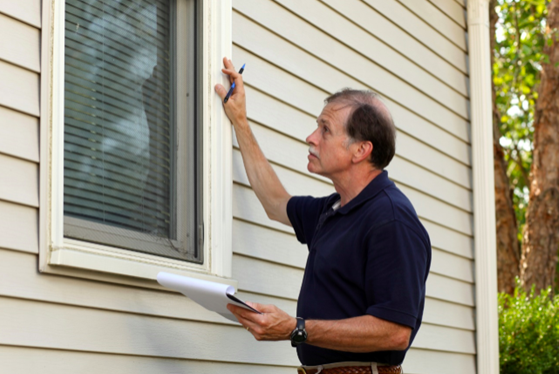Air leaks around your windows can make your home feel drafty and lead to higher energy bills. These leaks allow warm air to escape in the winter and let hot air in during the summer. Identifying and fixing these leaks is a simple yet effective way to increase your home’s comfort and reduce energy costs.

Finding Air Leaks in Your Home Windows
Here’s how you can find air leaks in your home windows and take steps to fix them. Don’t hesitate to hire a window installation company if you need help.
- Check for Visible Gaps or Cracks
One of the first steps in finding air leaks is to inspect your windows for visible gaps or cracks. These are often the most obvious sources of drafts and can easily be sealed with weatherstripping or caulk. Carefully examine the edges of the window frame, especially around the corners where gaps tend to form. Look for any cracks in the frame or between the frame and the wall. If you find any, this is likely where air is getting in.
Additionally, inspect the window glass for any chips or damage that might allow air to pass through. Even small imperfections can cause significant drafts.
- Perform the Candle or Incense Test
Sometimes, leaks aren’t immediately visible, but they can still be felt. To detect these hidden drafts, try the candle or incense test. On a calm day, light a candle or stick of incense and move it slowly around the edges of the window frame. Pay attention to any flickering or changes in the smoke’s direction.
- Feel for Drafts with Your Hand
A simple yet effective way to find air leaks is by feeling for drafts with your hand. Place your hand near the window frame, focusing on areas where the frame meets the wall or where you suspect there may be a gap. If you feel cool or warm air, that’s a clear sign that air is leaking through.
- Use a Piece of Paper or Tissue
Another quick and easy way to spot air leaks is by using a small piece of paper or tissue. Hold the paper near the edges of the window, and if the paper starts to move or flutter, it indicates that air is passing through. This is a great way to locate smaller leaks that might not be obvious at first glance.
- Check for Condensation or Ice Buildup
If you notice condensation or ice buildup around your windows, this could be a sign of a draft. Condensation forms when warm, moist air comes into contact with cold surfaces, and a draft can cause these temperature fluctuations. In colder climates, ice buildup can also be an indicator that cold air is leaking in.
Conclusion: Finding Air Leaks in Your Home Windows
Finding air leaks in your home windows is a crucial step in maintaining a comfortable and energy-efficient home. Once you’ve identified the leaks, it’s time to seal them up to keep your home cozy and your energy bills in check. Small efforts like these can have a big impact on your home’s overall comfort and efficiency.

Recent Comments